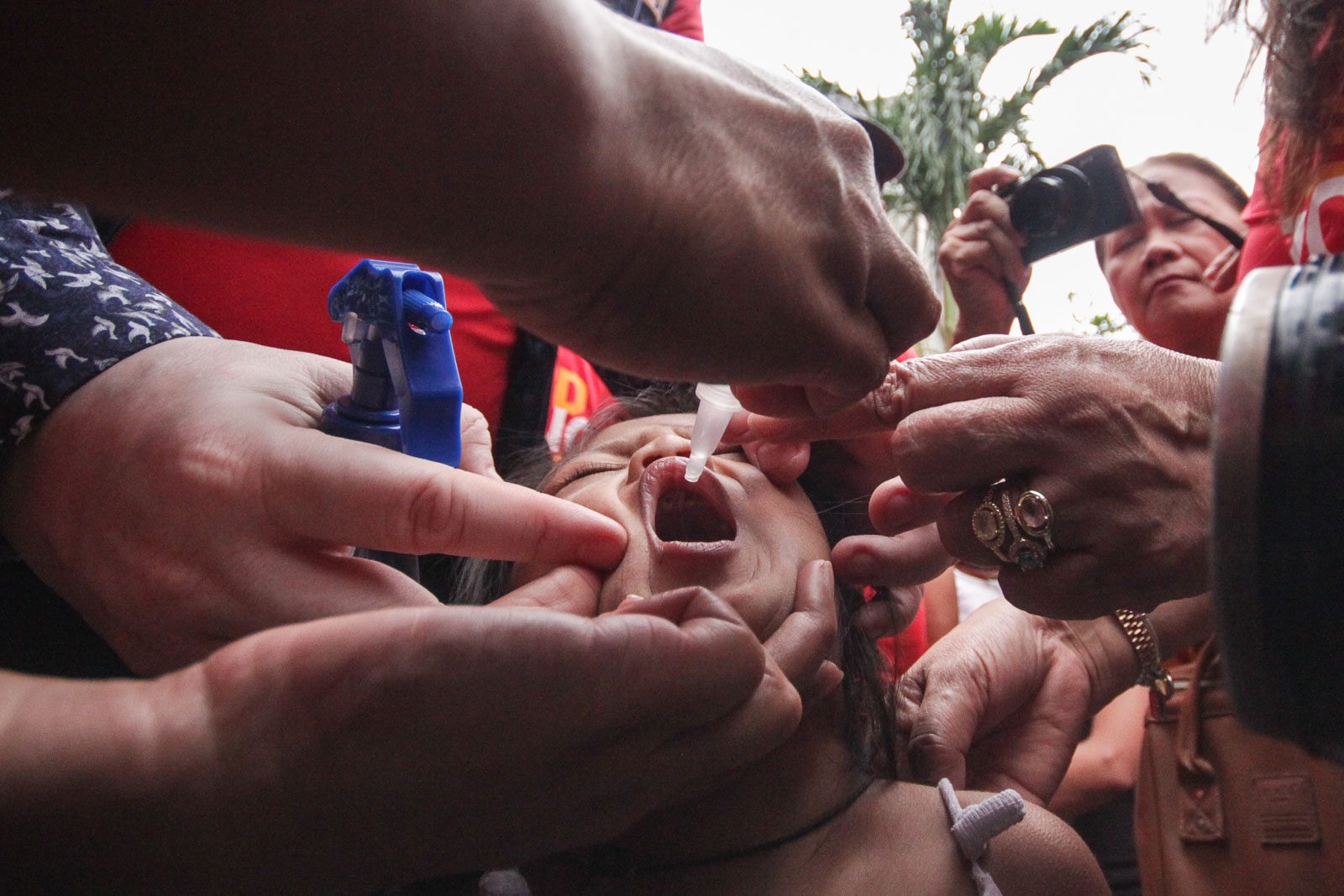SUMMARY
This is AI generated summarization, which may have errors. For context, always refer to the full article.

MANILA, Philippines (UPDATED) – The Department of Health (DOH) confirmed on Wednesday, November 27, that more environmental samples in the country tested positive for poliovirus types 1 or 2.
Out of 142 environmental samples collected beginning July 1, 26 tested positive. Of these, 25 were collected in Metro Manila and one came from Davao City.
Environmental samples come from surfaces and fluids in areas inhabited by people. Essentially, these samples are not found in people.
“The presence of poliovirus in environmental samples implies that carriers of the virus are continuously shedding in the communities. If viruses continue to spread from person to person in areas with low immunization coverage, the poliovirus evolves and regains the ability to cause paralysis,” said Health Secretary Francisco Duque III.
Does this mean Metro Manila is more vulnerable to polio? Not necessarily. Since vaccines in nature contain weak viruses, and the polio vaccine is given orally, the virus is defecated by the vaccine receiver. As septic tanks are not totally standardized in Metro Manila, the virus may go to open bodies of water in the environment. The cycle repeats if the virus is ingested from the environment. With each cycle, the virus evolves and can infect an unvaccinated child.
The vaccination campaign has been going on for months. This is how the DOH found a notable number of positive environmental samples in Metro Manila. The DOH cannot pinpoint, however, how many cycles of poliovirus defecation have begun to be able to say how evolved the virus has become in the environment.
Does that mean vaccines are the cause of danger? No. If anything, the culprit is in the sanitation levels and non-vaccination. If a child is vaccinated and ingests the virus, he or she will not contract polio no matter how evolved the virus is. Improved sanitation would allow children to avoid ingesting the virus in the first place.
Last September, the DOH declared a polio outbreak in the country, 19 years after it was eradicated. (READ: EXPLAINER: What is polio?)
The DOH, Research Institute for Tropical Medicine, United Nations Children’s Fund, and the World Health Organization responded to the outbreak through intensified surveillance of acute flaccid paralysis cases, implementation of simultaneous mass vaccination, and expansion of environmental collection sites nationwide.
There are currently 8 confirmed polio cases in the country found in small children who either did not receive any polio vaccine or did not have adequate doses.
Out of the 8, 7 are in Mindanao while one is in Laguna.
There is an ongoing synchronized vaccination campaign in Metro Manila and Mindanao until December 7, with health workers going house-to-house to administer the oral polio vaccine. There are also vaccination sites in barangays, malls, terminals, and fast-food chains like McDonald’s. – Rappler.com
Add a comment
How does this make you feel?
There are no comments yet. Add your comment to start the conversation.